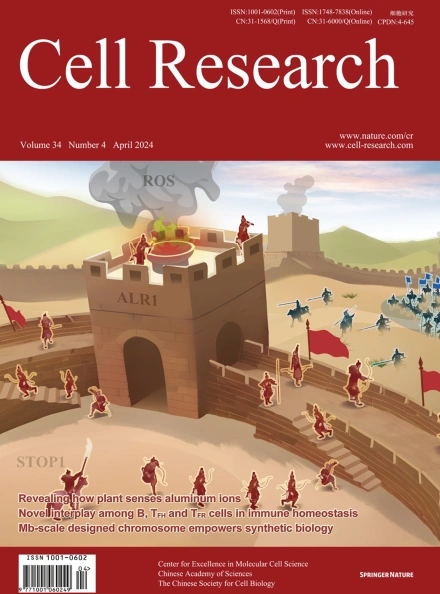
Advanced Search
Submit Manuscript
Advanced Search
Submit Manuscript
Volume 34, No 4, Apr 2024
ISSN: 1001-0602
EISSN: 1748-7838 2018
impact factor 17.848*
(Clarivate Analytics, 2019)
Volume 34 Issue 4, April 2024: 281-294 |
The LRR receptor-like kinase ALR1 is a plant aluminum ion sensor
Zhong Jie Ding1,† , Chen Xu1,2,† , Jing Ying Yan3 , Yu Xuan Wang1 , Meng Qi Cui1 , Jun Jie Yuan1 , Ya Nan Wang1 , Gui Xin Li4 , Jian Xiang Wu4 , Yun Rong Wu1 , Ji Ming Xu1 , Chun Xiao Li1 , Yuan Zhi Shi5 , Chuan Zao Mao1 , Jiang Tao Guo6 , Jian Min Zhou7 , Moussa Benhamed8 , Nicholas P. Harberd1,9 , Shao Jian Zheng1,2,10,*
1State Key Laboratory of Plant Environmental Resilience, College of Life Sciences, Zhejiang University, Hangzhou, Zhejiang, ChinaPlant survival requires an ability to adapt to differing concentrations of nutrient and toxic soil ions, yet ion sensors and associated signaling pathways are mostly unknown. Aluminum (Al) ions are highly phytotoxic, and cause severe crop yield loss and forest decline on acidic soils which represent ∼30% of land areas worldwide. Here we found an Arabidopsis mutant hypersensitive to Al. The gene encoding a leucine-rich-repeat receptor-like kinase, was named Al Resistance1 (ALR1). Al ions binding to ALR1 cytoplasmic domain recruits BAK1 co-receptor kinase and promotes ALR1-dependent phosphorylation of the NADPH oxidase RbohD, thereby enhancing reactive oxygen species (ROS) generation. ROS in turn oxidatively modify the RAE1 F-box protein to inhibit RAE1-dependent proteolysis of the central regulator STOP1, thus activating organic acid anion secretion to detoxify Al. These findings establish ALR1 as an Al ion receptor that confers resistance through an integrated Al-triggered signaling pathway, providing novel insights into ion-sensing mechanisms in living organisms, and enabling future molecular breeding of acid-soil-tolerant crops and trees, with huge potential for enhancing both global food security and forest restoration.
https://doi.org/10.1038/s41422-023-00915-y